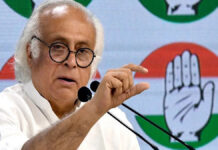The auto industry is against the move to electrify transport. Is this its last gasp or does it have a point?
The automotive industry is being described by some, who feel the future is electric, as status-quoist. After all India’s two-wheeler manufacturers have openly attacked proposals by the NITI Aayog to make all sub-150cc motorcycles and scooters electric. So it is being ridiculed as ancient, not open to new ideas and scared of becoming extinct. But there are some severe issues with electrification in India that urgently need to be addressed and the industry, while dragging its feet on the issue, does have some points. The government and policy-makers would be silly to ignore them. While India has enough electricity, the electrical grid is nowhere near capable enough of handling the tremendous load that even disaggregated home-charging will place on the system. Of course, that will be built up over the next decades, but the other problem, that of cost, is not going to go away in a hurry.
Electric motorcycles and scooters are expensive, particularly if they have a functional range of over 100 km. The average commuter motorcycle costs around Rs 50,000 today, but an e-motorcycle with 100 km range will cost Rs 1 lakh at the bare minimum, possibly more. The batteries also will have a lifespan of around 1,500 cycles, which would be decent for a mobile phone, but you wouldn’t change your 100 cc motor after five years, would you? Nobody will buy electric vehicles for altruistic reasons, no matter how much greenmail the government and environmentalists indulge in, unless the motorist sees actual benefit of the product. In a two-wheeler, running on electricity is less than half as expensive as running on petrol. Even in extreme scenarios, that means a saving of Rs 500 a month. If fuel prices increase faster than electricity prices, buying an electric two-wheeler does not make sense and the government’s FAME-II subsidy scheme is but a drop in the ocean. The fact is the four-stroke 100cc petrol motorcycle brought mobility to millions of Indians, giving even the impoverished a mode of transport that empowered them economically. The economic impact of the motorcycle thanks to the mobility it produced was crucial to India in the late 1980s through the 1990s, much like the mobile phone in the mid-2000s and cheap over-the-air data today. Going electric is a noble goal but if we set targets in a very short-term, it will leave millions of Indians behind. It is elitist and if we are to work towards “sabka saath, sabka vikas”, we will need to work towards solutions that make environmental friendliness affordable.




























